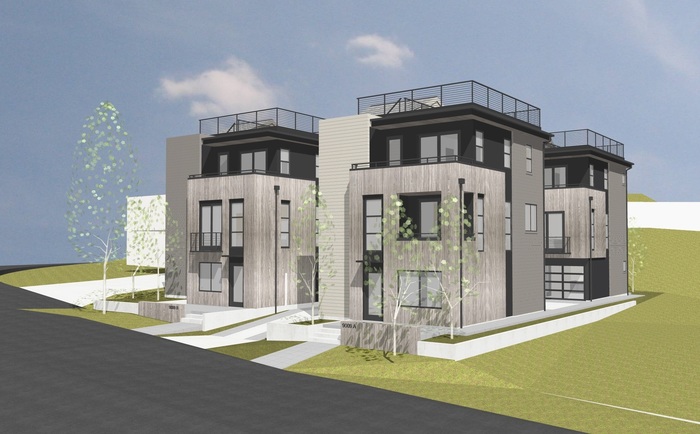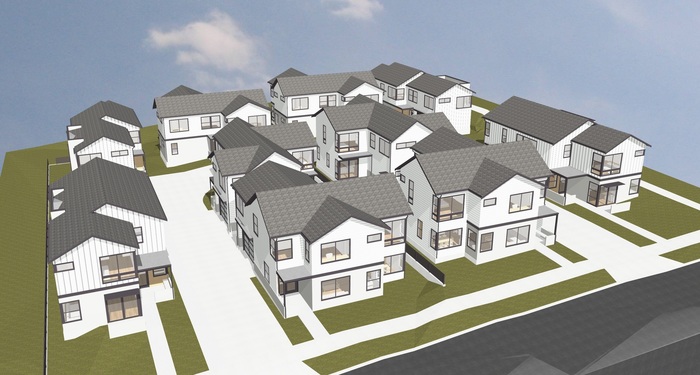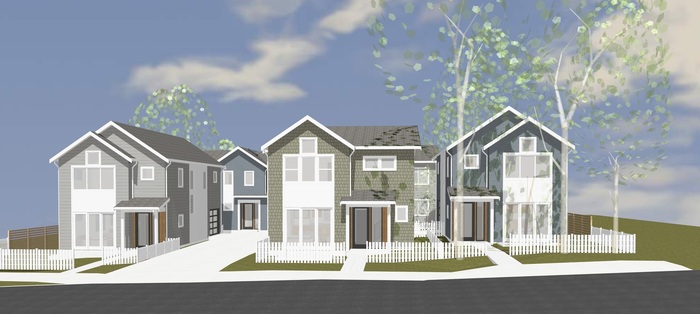With the passage of House Bill 1110 in the Washington State Legislature two years ago, the environment for housing construction in our state has changed dramatically. HB 1110 mandates that all one, two and three tier cities in the state must relax the requirements of single-family zoning and allow multiple dwellings on lots where only one primary single-family dwelling was previously allowed. All applicable cities in the state were required to adopt new code to align with the requirements by June 30th of this year. As such, Vandervort Architects has had a chance to work with these new codes in Seattle and other nearby jurisdictions. This blog entry is dedicated to our observations of the new middle housing codes in two of these cities.

Seattle is currently working under an interim zoning code while the “One Seattle” plan is being finalized. The interim code meets the state’s mandate but is very basic in its requirements. We can imagine that various housing types will be built in the neighborhood residential (NR) zones in the City of Seattle. Our Matthews Beach project focuses on maximizing the available density while supporting a detached single-family arrangement. These homes are modest in size (1,500 to 1,700 sf) but feature at least three bedrooms each with open living spaces. All parking is provided in garages, and each dwelling will have outdoor spaces at grade and on top-level roof decks.
The City of Shoreline was able to adopt its middle housing ordinance early in 2025 and anticipates a variety of housing types: Single family detached homes, Townhomes, Cottages, and Courtyard Apartments. Our Westminster Triangle project spans two sites that were previously zoned for single-family development. Each site is quite large and contained one old detached home each. The project brief was to clear the property and create a small pocket neighborhood of ten detached homes. These homes will be somewhat larger than the Matthews Beach project (about 2,500 sf homes), with double car garages. This is intended to meet the market demand for medium-sized homes with four (+) bedrooms and with front and back gardens. It should be noted that this site is zoned to handle much higher density than we designed (up to 32 dwelling units), with no on site parking required.


Shoreline decided to make a distinction between the middle housing zones, ranging from High Density (NR1) to Low Density (NR3). While the Westminster project is in the mid-density zone (NR2), the Boeing Creek Homes are in the lower density NR3 zone. This zone has some unique characteristics, such as very limited hard surface coverage and a two-story height limit. This site is zoned to allow up to six new dwelling units, but our client decided to move ahead with five dwellings, and to provide garage parking with modest sized homes (1,600 to 2,100 sf). Three of the dwellings are arranged along the street with front facing entries and gardens. , The other two dwellings enter off of a shared auto court, and feature generous back gardens. The dwellings offer three or four bedrooms each, and are set up to appeal to a broad market, including first time home buyers, families and move-down buyers.
With the implementation of middle housing ordinances statewide, we anticipate that much of the housing growth in urban areas will be taking place in zones that were previously zoned exclusively for single-family development. For developers and owners, this change offers a lot of advantages, including smaller projects, an abundance of available buildable lots, and potentially lower infrastructure upgrade costs. Of the adopted ordinances we have reviewed, it seems that many of them have very limited design standard requirements. These can be an advantage from a design standpoint, as long as the Seattle architect or design team is committed to developing a project that balances the need for additional housing with consideration given to the scale and texture of the immediate neighborhood.